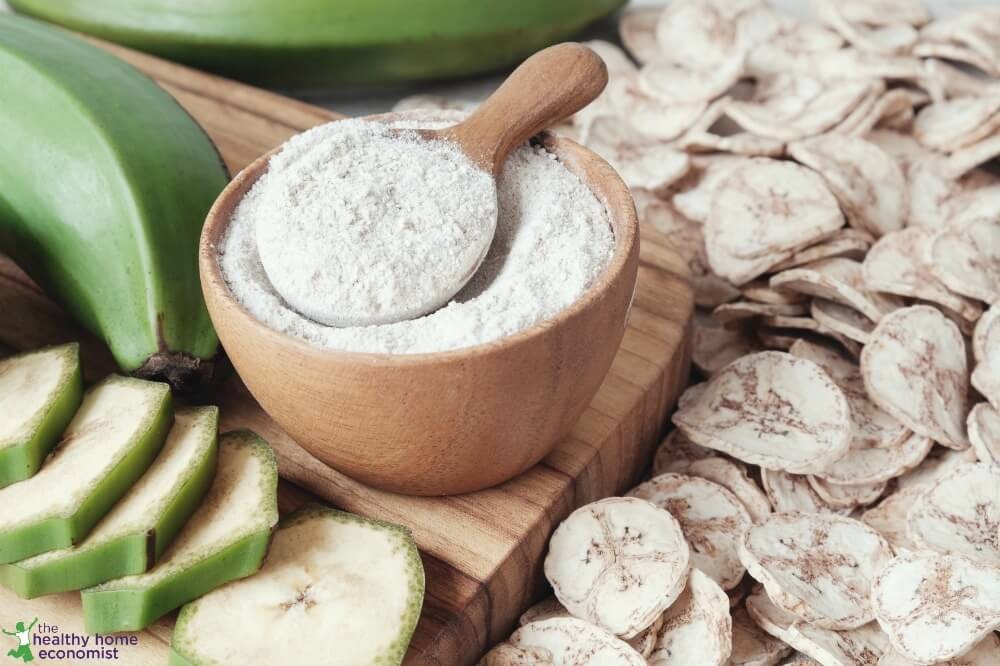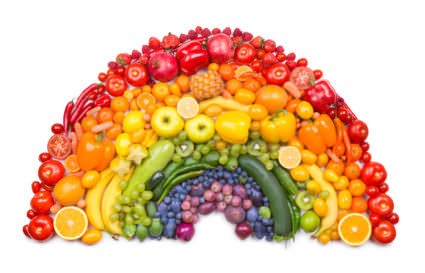Between the Australian bushfires, Greta Thunberg and the rise of the conscious millennial consumer, 2020 is set to be a year in which the health of the planet becomes as important as the health of ourselves and our families. Such external influences will see the average Kiwi pantry and dinner table evolving in the new decade with a focus on fresh, fast, fit and fair.
We’re concerned about where our food comes from, our connection to it and the people that grow it and we’re seeking newer, more convenient solutions to the daily grind of preparing nutritious meals.
Global indications are that fresh produce remains at the top of every trend list, and in New Zealand we’re lucky to have access to some of the tastiest fruit and vegetables on the planet. United Fresh, New Zealand’s only pan-produce industry organisation, has broken down the top fresh produce trends from around the world and around our nation and forecasts a bumper year for our traditional 5+ A Day.
The Vegans are coming – or are they?
Despite the ongoing narrative about the rise of plant-based protein as a solution to climate change, studies show only 6-7% of Kiwis identify as vegetarian or vegan. As a nation of devout meat-eaters how will the rise of vegan meat replacements impact our daily habits?
Expect more market offerings that test our desire for lab grown meat and new innovative blends (like grains and mung beans) to mimic the creamy textures of both meat and dairy products. Soy products are increasingly swapped out for mung bean, hempseed, pumpkin, avocado and watermelon seed to maintain texture while also adding amino acids to meals.
Meat is still important and will still represent an economical source of protein. Studies show that consumers are willing to delve heavily into both plant-based protein and traditional meats with 98% of alternative meat buyers not only buying traditional meats but spending more to purchase higher quality cuts in the process. Butchers will look to extend their offerings by joining the flexitarian craze in 2020, adding plant-based ingredients such as mushrooms to their products in an effort to design meat products that are better for consumers and for the planet.
And while many of us will maintain our current meat consumption, expect vegetables to be more than just a supporting act, increasingly forming the central focus of the meal rather than just a side dish.
Conscious consumption
2020 looks to be the year of action on climate change. With widespread fires over the ditch and New Zealand’s Zero Carbon Bill coming into effect, all eyes are on the Earth, and on what possible measures we can take to save her. Look for two key phrases — sustainable and regenerative agriculture — in reference to everyone involved in food sourcing, from farmers and the government, to retailers and manufacturers, taking a closer look at how to use land and animal management practices to improve soil health and retain carbon.
Consumers will be seeking out brands that support these regenerative practices and avoiding those with excess or wasteful packaging.
Zero-waste cooking is the new trend with younger generations of consumers valuing retailers that are eco-friendly. Expect more edible and biodegradable packaging on our supermarket shelves, and reusable everything, from cups to cutlery.
The pressure to reduce packaging in the fresh produce aisle continues with multiple innovations coming to a store near you.
Please make my life easier
Time is the new luxury and busy New Zealanders are shopping for convenience despite concerns around sustainability. Walking the tightrope between quick, nutritious, fresh food and packaging concerns will be a huge challenge for producers in 2020. New small store formats are making their mark both with local corner-store grocers and big internationals such as Circle K coming to an urban neighbourhood near you. Customers don’t want to travel far for quality fresh produce and a good range of specialty groceries. Convenience is key, and more products will be available at petrol stations and grocery stores that are not only easy to eat on-the-go, but are also healthy and fresh.
Ready-meal solutions are a huge driver of the NZ consumer. As life gets busier, we want to have meals that are instant but don’t sacrifice the taste, nutrition content and flavour of traditional home cooking. Supermarkets have taken their lead from delivery services with a huge range of pre-cooked foods on offer. Look for more innovation in this area in 2020 and expect more hot food offerings as well, such as a hot ham roll or a tasty curry straight from the deli counter. Expect to see more pre-prepared vegetable offerings as well with products such as ‘zoodles’ appealing to time-poor but health conscious consumers.
Millennials are the ‘want it now’ generation, feeding the popularity of services such as Uber Eats. Takeaway spending will continue to grow faster than supermarket spending as these consumers seek to contract out ‘domestic tasks’ like cooking and cleaning.
 Super diets and flour power
Super diets and flour power
Will 2020 be the year of Keto? The ketogenic, or “keto,” diet has seen a surge in popularity as more people turn towards the low-carb way of eating, and keto diet products are increasing in popularity as well. According to some studies, the global ketogenic diet food market is projected to grow by 5.3% over the next 5 years.
Consumers on the keto bandwagon are seeking out lower carb ingredients and are fuelling a flurry of new flours. Expect 2020 to bring banana flour into home pantries, with products like cauliflower flour in bulk and baking aisles, competing for space with established alternatives such as almond or coconut flour. Consumer packaged goods are getting in on the trend by replacing traditional alternative flours with seed flour blends in chips and snack foods.
Then there’s the sugar replacements. Cutting out sugar has been a driving force in new product development for a few years now and 2020 is no exception. In addition to the usual suspects like, stevia, honey and maple syrup, there’s lots more to choose from. Syrupy reductions from fruit sources like monk fruit, pomegranates, coconut and dates will proliferate as will the more unusual syrups made from starches like sorghum and sweet potato.
Healthy snacks that get the low-carb tick are on the upswing as well, and while there’s a huge new range of protein bars and cookies on offer, the refrigerated section of the supermarket will see the biggest expansion with the kind of wholesome, fresh snacks typically prepared and portioned in advance at home: hard-boiled eggs with savoury toppings, pickled vegetables, drinkable soups and mini dips and dippers of all kinds, all perfectly portioned and in convenient single-serve packaging. Even some nutrition bars will appear in the chiller, thanks to the addition of fresh fruit and vegetables.
Thirst quenchers
Hand-in-hand with the drive towards healthy lifestyles is the huge increase in consumers seeking out alternatives to alcohol. Low and no-alcohol drinks are in with unique non-alcoholic options popping up everywhere, and the popularity of fermented options such as kombucha showing no signs of slowing down. Many of the new-wave of zero-proof beverages seek to re-create classic cocktail flavours using distilling methods typically reserved for alcohol, creating an alternative to liquor meant to be used with a mixer rather than a drink on its own.
And while low and no-alcohol drinks are in, we still want a bit of mood-enhancement from time to time. New stress-busting beverages augmented with CBD or plant adaptogens (think mushrooms, herbs, ayurvedic preparations) may hit the market over the next 12 months (pending the results of the 2020 referendum), offering a range of physical and mental health benefits.
Biodynamic wine will also grow in popularity in 2020 as we seek out ever more crops grown without pesticides or chemicals. The conscious consumers of 2020 will be willing to spend more money on a glass of wine if they think it’s more beneficial to the planet.
Caulipower
Riding the wave of low-carb diets, the humble cauliflower has become the new ‘it vegetable’ and its explosion in popularity isn’t expected to decrease anytime soon.
While many home-cooks are content to make their own cauli-concoctions, expect to see a significant rise in cauliflower-based products such as gnocchi, rice and pizza bases taking over the supermarket aisles.

Rainbow produce
We’re often urged to ‘eat a rainbow’ of fruit and vegetables. The greatest health benefits of fresh produce come from consuming a wide spectrum of bright colours and growers around the globe have taken this to heart with new ranges of uniquely coloured produce coming to market in the coming year.
Red kiwifruit have already been signalled as a tasty, exciting addition to our fruit bowls but we can also expect a new wave of sprouts, leaves, and other greens and an increase in the popularity of spirulina and butterfly pea, which is a dramatic blue.
Upping the ante with new colours and flavours in conjunction with the increasing popularity of diets with high vegetable content is forecast to see a real upswing in fresh produce consumption. We all know that getting our 5+ A Day is the key to good health, but in 2020 consumers start to really put those best intentions into practice and experiment with newer and more exciting ways to incorporate fruit and vegetables into every meal.
On the Gram
Popular culture around the globe is now fuelled by Instagram and our diets are no exception in 2020. “Instagrammable” foods like star fruit and freak-shakes sweep into markets on a wave of hashtags at a rate traditional advertisers can only dream of.
Food that looks the part, that can make for a great social media picture is increasingly important to younger consumers with a recent study finding nearly 50% of this market shared a photograph of their food online at least once a week.
In 2020 Gen Z begin to join our workforce. This generation is 18 and under and, for the first time, we now have five different generations of active consumers influencing food retailers in New Zealand. Many Millennials and Gen Z shoppers don’t connect with traditional media so expect to see a transition towards new ways of using technology to promote food products. This demographic are not passive viewers of media and demand a dynamic user experience. Think viral Tik Tok videos for exciting new food products emerging in place of Instagram ‘influencer’ campaigns.
A sense of adventure
Discovery is a major trend across food and beverage production in 2020. Consumers increasingly want to get out of their comfort zone to try new flavours and textures and experience different cultures through their food consumption.
Trend forecasters are picking West Africa as the newest source of exciting flavours to tempt our taste buds with its cuisine a melting pot of Middle Eastern and Mediterranean influences. Think tomatoes, onions and chilli peppers mixed with peanuts, ginger and lemongrass. The region is also a source of new superfoods like moringa and tamarind, and lesser-known cereal grains sorghum, teff and millet.
Fresh fruit and vegetables are an easy vehicle to play with new flavours and cultural twists so expect more exotic treatments of kiwi faves like kūmara transformed into the key ingredient of a West African peanut stew.
Getting to know you
2020 will see an increasing shift towards closer communication between big corporates and consumers. Customers want to have trust in their supplier of fresh food. They love to know that the mandarins in their local supermarket came from Kerikeri or Gisborne and that they are part of a seasonal programme. They want to know that the grower of their carrots is a family business stretching back for 50 years.
Smart grocery operators will utilise social media channels to connect on a personal basis with their communities, introducing the outside world to their staff and systems. Grower organisations will also reach out to an audience increasingly concerned with the provenance and traceability of what goes on their plates.
Building trust and understanding, particularly amongst the notoriously fickle millennial demographic, will drive advances in food affordability, the human face of the business, moves towards a living wage, job equality issues and sustainability.
The use of social media like this brings technology advances full circle – from isolating us in a virtual world where our imagined future was downing food in a tablet form, to providing a very real village-like lifestyle. A 2020 in which we are able to connect instantly with every grower whose produce ends up on our tables, where we can see the journey of our fruit and vegetables from farm to plate and where we attain a far greater appreciation for the most humble of these nutrition powerhouses.
United Fresh (www.unitedfresh.co.nz) has over 29 years’ experience supporting and promoting the New Zealand fresh produce industry, working with the entire value chain, from seed producer and grower to consumer, providing leadership on pan produce issues.
This is their second Trend Report for New Zealand.



